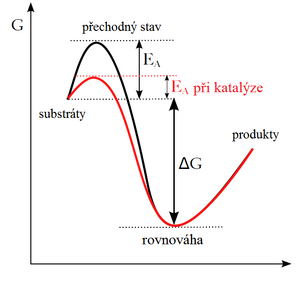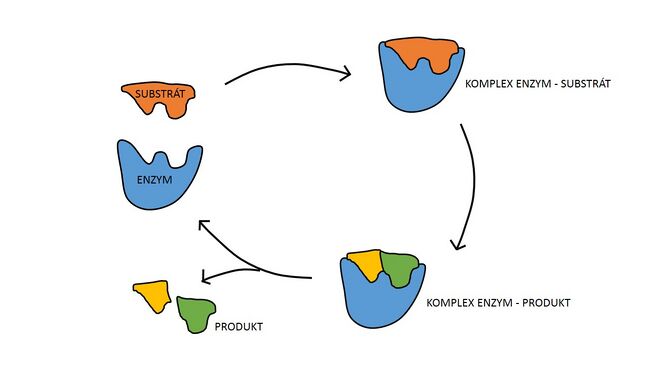Mechanism of action of enzymes
Enzymes, like other catalysts, work on the principle of reducing the activation energy .
During the first step, the enzyme-substrate (ES) complex is formed. This reaction is typically very fast and reversible. Subsequently, the substrate is transformed into a product under catalysis by the enzyme. The ES complex thus forms an enzyme-product (EP), which disintegrates to release the product. This reaction is slow and irreversible.
The reaction is thus divided into several successive steps, in which one or several transition states ES (transition states) arise. The activation energy required for the formation of each intermediate and the subsequent conversion of ES to EP is lower than for the direct conversion of substrate to product, even though the overall ΔG of both reactions is the same.


